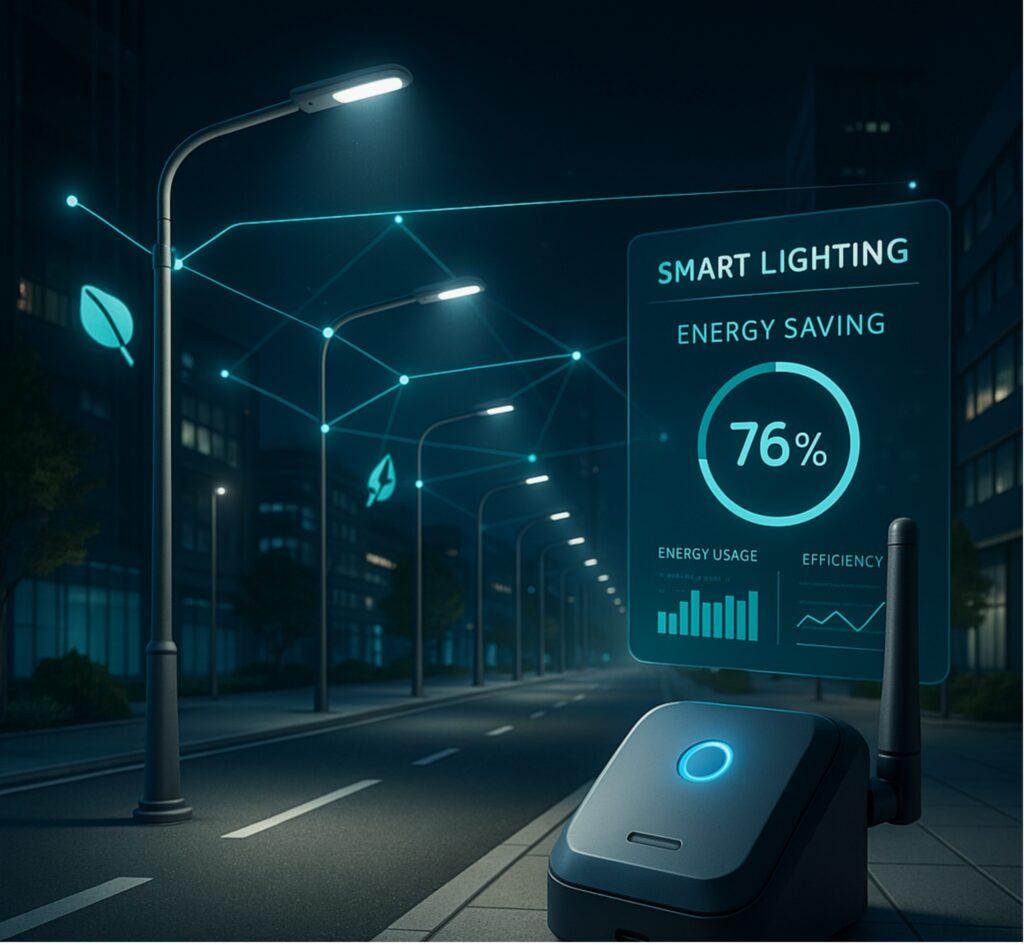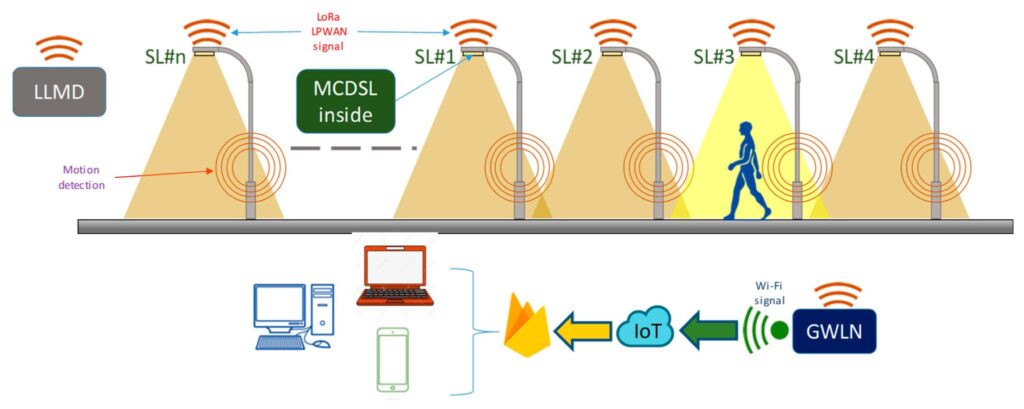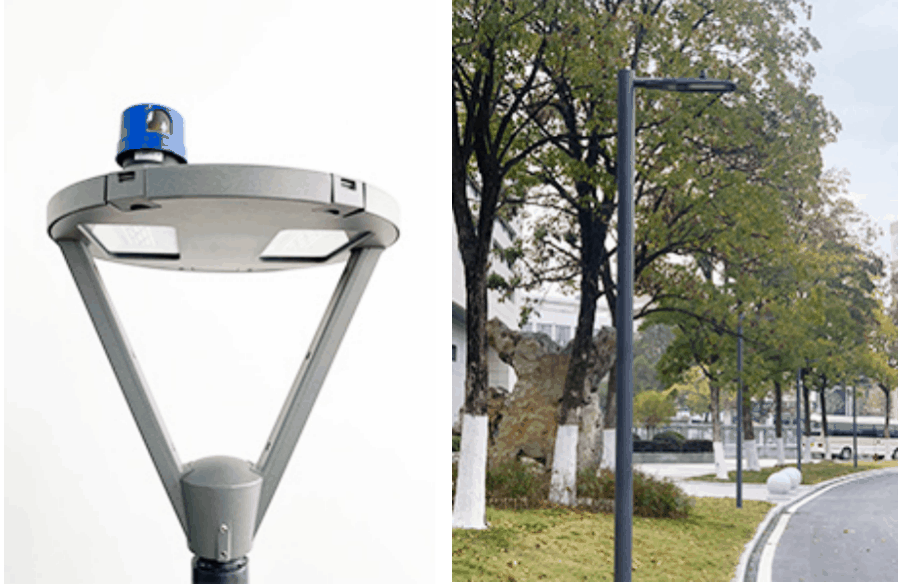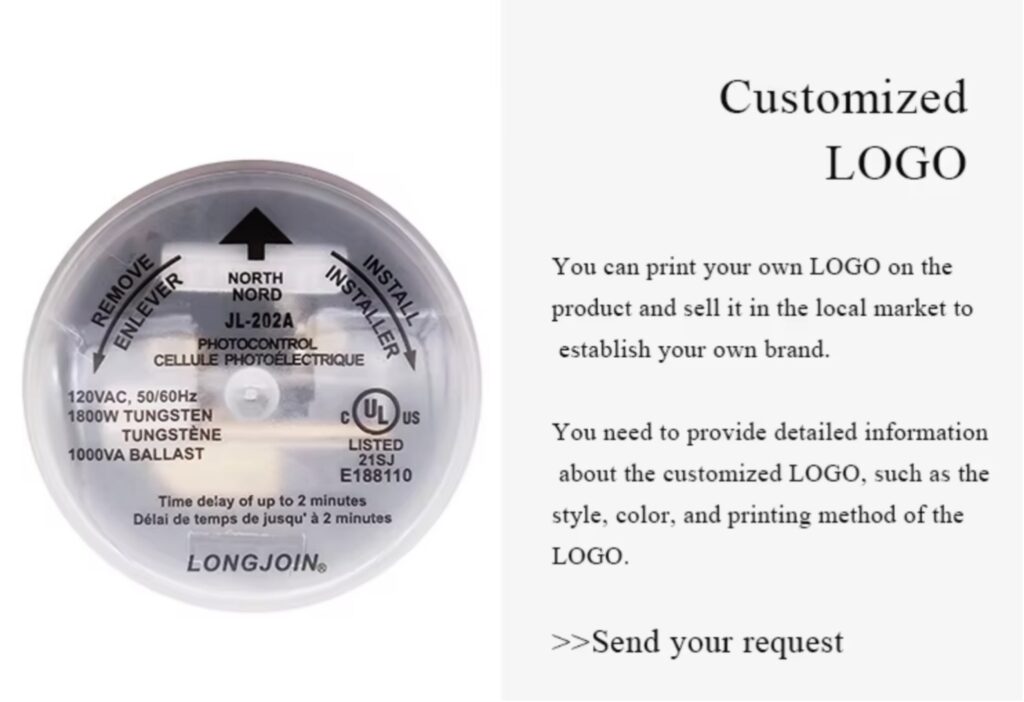Outline
- Introduction
- How Does ZigBee Boost the Performance Of Light Controllers?
- How LoRa Use Benefits in Photosensors?
- How Does WiFi Improve Intelligent Light Photocell Sensors?
- Why Is NB-IoT Key for Smart Photocontrol Receptacle?
- How Do These Technologies Compare and Integrate to Boost Product Competitiveness?
- Final Words

Photocontrollers are transforming how cities and buildings manage lighting. They adjust brightness, reduce energy waste, and support remote operations. But communication is key—these devices must stay connected and responsive.
That’s where wireless technologies come in. ZigBee, LoRa, WiFi, and NB-IoT each offer unique advantages for different lighting scenarios. Here is a comprehensive breakdown of these protocols.
How Does ZigBee Boost the Performance Of Light Controllers?
This low-power wireless protocol is made for short-range use. It runs on a self-organizing mesh network, making it ideal for smart homes. Here are its details:
Technical Characteristics of ZigBee
- ZigBee uses a self-organizing mesh network. Devices connect and maintain links automatically, boosting system reliability.
- It’s highly scalable, supporting up to 65,000 nodes. This makes it ideal for large setups.
- Its short-range communication—10 to 100 meters—is best for indoor use.
- It runs at 250 kbps, which is enough for control and monitoring.
- Security is built-in, using AES-128 encryption to keep data safe.
Application Advantages
ZigBee connects the LED street light photocell with ease. It enables centralized control through smartphones or tablets. This improves user convenience. Its low power use helps cut down on energy consumption. That makes it efficient and cost-effective for smart lighting.
Also, it easily accommodates additional devices without significant infrastructure changes. Advanced encryption ensures secure communication within the lighting network. All these combined make ZigBee perfect for small-scale intelligent lighting management.
Addressing Customer Pain Points
| Customer Pain Point | ZigBee Solution |
| High energy consumption | Implements low-power communication, reducing overall energy usage. |
| Complex installation processes | Wireless setup minimizes wiring, simplifying installation. |
| Limited control flexibility | Offers remote and automated control options for user convenience. |
| Scalability concerns | Supports extensive device networks, allowing easy expansion. |
| Security vulnerabilities | Utilizes AES-128 encryption to protect data transmission. |
Future Trends
New tools like Sensify can turn ZigBee lights into motion sensors. No extra hardware needed. With AI and machine learning, ZigBee systems could become even smarter. As it works well with many devices, ZigBee is ready for deeper smart home integration.
How LoRa Use Benefits in Photosensors?

Image Courtesy: instructables
This is a long-range, low-power communication protocol. Here is why it’s ideal for large areas with little infrastructure.
Technical Characteristics of LoRa
- LoRa offers long-range communication. It reaches 15–30 km in rural areas and 2–5 km in cities.
- It consumes very little power. Devices can last up to 10 years on a single battery.
- The data rate is low. Usually between 0.3 and 50 kbps. This is ideal for sending sensor data.
- LoRa uses chirp spread spectrum modulation. This makes it resistant to signal interference. It’s cost-effective too.
- It works on unlicensed ISM bands, which lowers spectrum costs.
- It supports GPS-free geolocation using network triangulation.
- Data is secured with AES-128 encryption.
Application Advantages
LoRa supports wide-area lighting control. It needs minimal infrastructure to cover large spaces. Its low power use extends battery life, cutting down on maintenance. Using unlicensed frequency bands also reduces operational expenses.
It also supports a large number of devices, facilitating expansion as needed. Lastly, the robust modulation techniques ensure stable communication even in challenging environments.
Addressing Customer Pain Points
| Customer Pain Point | LoRa Solution |
| Limited coverage area | Long-range communication covers extensive areas with fewer gateways. |
| High energy consumption | Low power operation extends battery life, reducing maintenance needs. |
| High operational costs | Use of unlicensed bands and minimal infrastructure lowers expenses. |
| Scalability limitations | Supports thousands of devices, allowing for network expansion. |
| Communication instability | Robust modulation provides reliable data transmission in various conditions. |
Future Trends
LoRa is gaining ground in smart city setups. It’s expected to merge with 5G networks. This will boost transmission speed and system capabilities. The LoRa Alliance is also refining standards. These efforts aim to improve device compatibility and global adoption.
How Does WiFi Improve Intelligent Light Photocell Sensors?
This protocol fits well with local street light sensors. Real-time updates and seamless links became easy. Here are the further details:
Technical Characteristics
- WiFi 6 delivers high-speed data transmission of up to 9.6 Gbps.
- It supports dual-band and tri-band setups. This allows flexible and reliable connectivity. OFDMA technology improves efficiency. It lets multiple devices share channels at the same time, reducing delays.
- MU-MIMO increases network capacity. It allows simultaneous communication with several devices.
- WiFi 6 uses 1024-QAM modulation. This provides better data rates and overall performance.
- Target Wake Time (TWT) helps save energy. It schedules data transmission to preserve battery life.
- WPA3 protocol ensures advanced security for data protection.
Application Advantages
WiFi supports real-time lighting control and monitoring. Its high data rate allows quick responses and system updates. Wireless setup reduces the need for cabling. This simplifies and speeds up installation. WiFi supported photo controls integrate easily with existing networks. Users can manage them through familiar platforms like phones or computers.
Addressing Customer Pain Points
| Customer Pain Point | WiFi Solution |
| High installation costs | Wireless setup minimizes cabling, reducing labor and material expenses. |
| Limited control flexibility | Enables remote and automated control via smartphones or tablets. |
| Scalability concerns | Supports numerous devices, allowing easy expansion of the lighting network. |
| Energy consumption | TWT schedules transmissions, conserving energy in connected devices. |
| Security vulnerabilities | WPA3 protocol provides enhanced encryption for secure communication. |
Future Trends
WiFi 6 will improve the efficiency of lighting networks. Future upgrades may bring AI-powered systems. These will learn user habits and adjust lighting for better energy use and comfort.
Why Is NB-IoT Key for Smart Photocontrol Receptacle?

This is a cellular tech built for wide coverage and low power use. It supports thousands of devices in cities and industrial zones.
Technical Characteristics
- NB-IoT offers wide coverage—up to 15 km.
- It supports up to 200,000 devices per cell.
- It uses licensed LTE bands, reducing interference.
- LTE-grade encryption ensures secure data transmission.
- It also benefits from existing cellular infrastructure for easy deployment.
Application Advantages
NB-IoT works well in both urban and rural lighting systems. Its deep indoor and wide-area coverage ensures strong connectivity. Its low-power design ensures light photocells operate for years on a single battery.
It supports massive device connections, making it ideal for large deployments. Licensed spectrum and strong encryption provide stable and secure communication.
Addressing Customer Pain Points
| Customer Pain Point | NB-IoT Solution |
| Limited coverage | Offers deep indoor and wide-area connectivity |
| Frequent battery replacements | Low power use means over 10 years of battery life |
| High deployment costs | Utilizes existing cellular infrastructure, minimizing additional setup expenses. |
| Network congestion | Supports high connection density, accommodating thousands of devices per cell. |
| Security concerns | Employs LTE-grade encryption for secure and reliable data transmission. |
Future Trends
NB-IoT is merging into 5G networks. Combined with AI, it will support predictive maintenance. New energy harvesting technologies may further extend device life. Some devices may no longer need batteries at all.
How Do These Technologies Compare and Integrate to Boost Product Competitiveness?
| Technology | Pros | Cons |
| ZigBee | Low power consumption Mesh networking extends coverageHigh device density support | Limited range (10–100 meters)Requires a dedicated hubPotential interference in the 2.4 GHz band |
| LoRa | Long-range communication (up to 15 km)Low power usageOperates in unlicensed spectrum | Low data rates (0.3–50 kbpsHigher latencyRequires gateways |
| WiFi | High data throughputUbiquitous infrastructureSupports real-time control | Higher power consumptionLimited range without extendersPotential network congestion |
| NB-IoT | Wide coverageExcellent indoor penetrationHigh connection density | Dependent on cellular infrastructureHigher latencySubscription costs |
Technology-Specific Customer Needs & Competitive Advantages
ZigBee:
The mesh network ensures stable communication in areas with many devices. Low power use extends battery life and cuts maintenance costs. It also works with many smart home systems, making it attractive for integrated solutions.
LoRa:
LoRa supports long-range communication and uses little power. This makes it ideal for remote areas like farms and environmental monitoring. It uses unlicensed spectrum, lowering deployment costs.
WiFi:
This technology is best for fast data transfer. Its wide availability and compatibility make it easy to add to homes and offices. This improves user convenience and shortens setup time.
NB-IoT:
Its wide coverage and strong indoor signal make it perfect for cities. It supports many devices at once, fitting large-scale setups. Because it runs on existing cellular networks, it ensures secure and reliable communication.
Future Development Directions
- Edge Computing Integration: Process data near the source to reduce delays and save bandwidth.
- Enhanced Security Protocols: Stronger security is needed to fight rising cyber threats in IoT systems.
- AI and Machine Learning: Use AI to cut energy use and predict equipment failures before they happen.
- Standardization Efforts: Create shared standards so devices from different brands work well together.
Final Words
Smart light controllers become more competitive when powered by the right communication technology. Choosing between ZigBee, LoRa, WiFi, or NB-IoT depends on your project’s scale and needs. For reliable, future-ready smart lighting solutions, Chi-Swear offers proven expertise and high-quality products tailored to every application.






